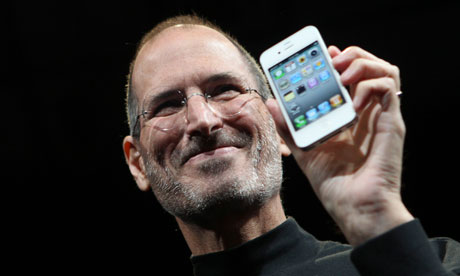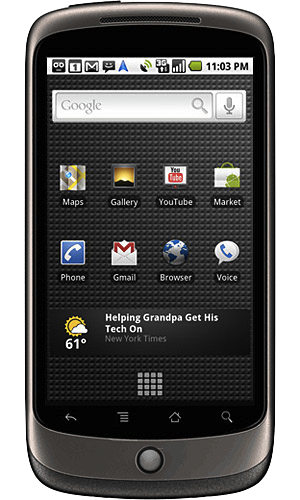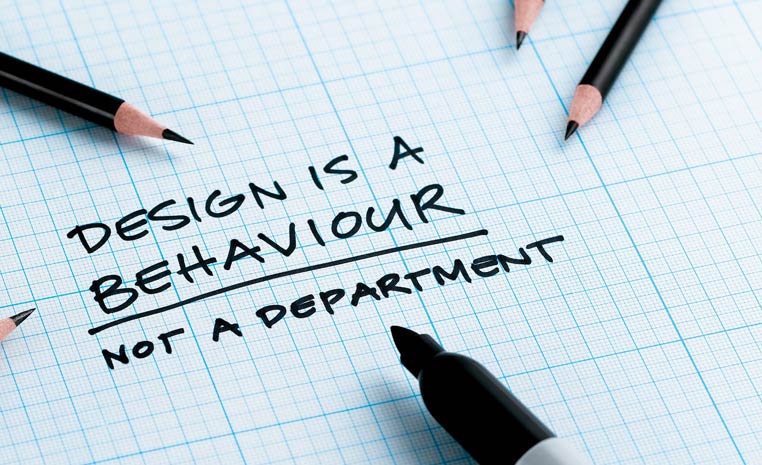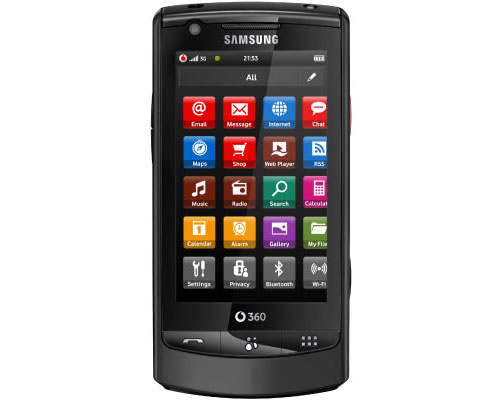Here are the slides to my talk delivered yesterday at the Virtual Goods Forum in London. Enjoy!
Month: June 2010 Page 1 of 2
 Last week, I moderated a panel at Mobile 2.0 Europe in Barcelona on “How to Make Money as a Developer”. Interestingly, there was no developer on the panel… 😉 However, there were representatives from Orange’s Partner Programme and from Telefonica, and I asked them if they would move from the “classic” 50/50 carrier revenue share (no one confirmed or denied the accuracy of that classic share of course) and, whilst they were clearly not willing to confirm anything (they probably couldn’t, to be fair), they did indicate that a revision of legacy models was under way in view of the not so new anymore challenges of app stores with their – now prevailing – 70/30 split in a developer’s favour.
Last week, I moderated a panel at Mobile 2.0 Europe in Barcelona on “How to Make Money as a Developer”. Interestingly, there was no developer on the panel… 😉 However, there were representatives from Orange’s Partner Programme and from Telefonica, and I asked them if they would move from the “classic” 50/50 carrier revenue share (no one confirmed or denied the accuracy of that classic share of course) and, whilst they were clearly not willing to confirm anything (they probably couldn’t, to be fair), they did indicate that a revision of legacy models was under way in view of the not so new anymore challenges of app stores with their – now prevailing – 70/30 split in a developer’s favour.
This week, Vodafone came out a little more openly: at MEM, their Content Services Director pondered to
give […] it back to the developers to let them monetise it.
The big one then followed. She said – and this must be close to an industry-first – that carriers
don’t necessarily have to drive towards revenue for all of that content.
And that is the real point: I have long been arguing that the real value of (great) content to carriers may not lie in incremental revenues (be it 50% or 30%) but in softer albeit much, much more important values, namely marketing, positioning as well as customer retention.
 An example: a couple of years ago, we shipped a whole suite of X-Men 3 content, game, wallpapers, tones, you name it. The launch was, of course, around the movie launch (which was tremendously successful) and we had carefully crafted marketing plans including many brand partners (20th Century Fox, Activision, Panini, etc). We managed to drive some exceptional campaigns to which carriers in a lot of countries contributed serious marketing dollars. Did they do this in order to obtain an SMS-margin-matching ROI? Not in the strict sense. To them, this was brand extension and affiliation. And, boy, did it work!
An example: a couple of years ago, we shipped a whole suite of X-Men 3 content, game, wallpapers, tones, you name it. The launch was, of course, around the movie launch (which was tremendously successful) and we had carefully crafted marketing plans including many brand partners (20th Century Fox, Activision, Panini, etc). We managed to drive some exceptional campaigns to which carriers in a lot of countries contributed serious marketing dollars. Did they do this in order to obtain an SMS-margin-matching ROI? Not in the strict sense. To them, this was brand extension and affiliation. And, boy, did it work!
Carriers biggest trouble is ARPU and customer churn. I am not sure about the latest numbers but for years the annual churn was reaching towards a third. And that is real money. If you can reduce churn by only a few points if you provide your users with great content services, you will see your money back many times. It is (brand) marketing, not incremental revenues that make it.
Now, as long as the content guys have revenue targets, the (normally very mighty) CFO of a carrier will ask painful questions on ROI and margins; and they will always come up short. Classify it as a marketing task though, and you’re looking really good: effective marketing that should yield measurable results at no cost. Hang on: at negative cost. How cool is that? I know that many a content guy at a carrier agrees with me here. Would they ever admit as much in public? You must be kidding me.
It is therefore good to see that Vodafone starts thinking publicly about alternative approaches with a view to strengthening and/or supporting their core business. Now put it in motion, folks! 🙂
 Tomorrow, I will be heading to London to attend and speak at the Virtual Goods Forum. I will be delivering a completely shiny new and all around better iteration of my “Mobile + Social: Show Us the Money” talk.
Tomorrow, I will be heading to London to attend and speak at the Virtual Goods Forum. I will be delivering a completely shiny new and all around better iteration of my “Mobile + Social: Show Us the Money” talk.
The conference is organised by the same fine folks who have made the Mobile Games Forum such a stalwart of industry networking, and I am looking forward to learning more from what looks like an excellent speaker line-up. Here’s some of their speakers:
- Mark Curtis, CEO Flirtomatic (and great presenter!)
- Ray Anderson, CEO Bango
- Phil Guest, EVP Ad Sales Sulake (the Habbo guys)
- Benjamin Joffe, CEO +8*
- Alex Krug, CEO Softgames
- Alex Brutin, VP Biz Dev Offerpal
- and many more…
If you are getting the appetite, Osney Media did give me a promotional code, which gives you a 50% discount. It is C0015SPK. I hope to see you there!
And if you cannot make it, you can at least follow the thing on Twitter: @virtualgoodsuk.
This week’s Carnival of the Mobilists is up and running. It features inter alia:
- a podcast on mobile ticketing;
- a recap of the M-Publishing event organised by the excellent Camerjam guys (which I so sadly missed due to illness);
- an interview with Tomi “Rat Hat” Ahonen on LBS and mobile marketing;
- new research on the growth of mobile data and its impact on the various parts of the value chain;
- Tomi Ahonen’s take on the iPhone 4
- and much, much more.
Oh, and they were also good enough to include my (very) recent post on people-centric design. Thank you. 🙂
The carnival is hosted over here and it is – as always really – well worth a read!
 Apple’s iPhone is only a marketing fad for vain urbanites. True purists go for Android. Those who see the light in volume go for Nokia or Samsung.
Apple’s iPhone is only a marketing fad for vain urbanites. True purists go for Android. Those who see the light in volume go for Nokia or Samsung.
All this are points often heard when one dives into the deeper echolons of most mobile tech blog or forum. Engineers throw up their hands because those “American-centric media types” “don’t get it” and only wave their flag for whatever Steve Jobs, turtle neck and all may put up onto the big screens of his church.
I am not American and I am not a media type. And I don’t wear turtle necks (well, not since c. 1989 at least). And yet, I do prefer my iPhone (3G) over my Nexus One. And this despite obvious advantages of the Nexus: better screen, quicker, haptic feedback (yes, Mr Jobs, I do like that), the concept of open source, etc, etc. So why do I stick to the iPhone? Fanboy? Marketing fad? Vain urbanite?
Here’s why: I have been trying to set up my Nexus so it will do what my iPhone does, and I am not talking of playing a fancy game or running some other app that is not (yet) available on Android. I am talking about the two key things I need a phone for (41-year-old non-techie I am), and that is phone calls and e-mail; calendar (with sync) is important, too. For the former I need my address book, and I need it to sync properly. For the latter, I need my (admittedly too many) e-mail accounts set up on my device and syncing properly. As to calendar, wait for it below. Alas, two very different experiences:
- On the iPhone, you do the following: 1) plug the phone into your computer, 2) answer “yes, please” when iTunes asks you if it should sync contacts and e-mail addresses, 3) get yourself a cup of coffee, 4) walk off.
 On the Nexus, you’re OK (-ish) if your life evolves around Google. With a Gmail account and associated contacts (and/or calendars), you’re sort of OK. It does all that. Now – shock, horror – I do not actually send all my mail from Gmail and my contacts are mainly dealt with in my address book (take Outlook or whatever you want if you’re a Windows user). And I use iCal and not Google Calendar. And so it starts: there is no desktop application that would help me do this. On a Mac, the phone is not even recognised when you plug it in (and that is a rare thing on a Mac; is this another piece of Apple vs. Google? I don’t know but I doubt it). So you are finding yourself setting everything up by hand! Entering the POP3 and SMTP (or IMAP) server addresses, user names, passwords, etc, etc for seven e-mail accounts is no fun. And (remember I am not a techie) invariably leads to some box checked wrongly here or a typo in a password there and, kawoom, nothing works. I can set up a Google Calendar/iCal sync BUT that will only sync the specific Google Calendar bit between the two, and not any of my other (work, home) calendars. I can sync my address book with Google, so that works. The whole procedure took me the better part of 45 minutes, including lots of corrections and swearing and led to me abandoning a half-configured beauty of an Android phone. Great result.
On the Nexus, you’re OK (-ish) if your life evolves around Google. With a Gmail account and associated contacts (and/or calendars), you’re sort of OK. It does all that. Now – shock, horror – I do not actually send all my mail from Gmail and my contacts are mainly dealt with in my address book (take Outlook or whatever you want if you’re a Windows user). And I use iCal and not Google Calendar. And so it starts: there is no desktop application that would help me do this. On a Mac, the phone is not even recognised when you plug it in (and that is a rare thing on a Mac; is this another piece of Apple vs. Google? I don’t know but I doubt it). So you are finding yourself setting everything up by hand! Entering the POP3 and SMTP (or IMAP) server addresses, user names, passwords, etc, etc for seven e-mail accounts is no fun. And (remember I am not a techie) invariably leads to some box checked wrongly here or a typo in a password there and, kawoom, nothing works. I can set up a Google Calendar/iCal sync BUT that will only sync the specific Google Calendar bit between the two, and not any of my other (work, home) calendars. I can sync my address book with Google, so that works. The whole procedure took me the better part of 45 minutes, including lots of corrections and swearing and led to me abandoning a half-configured beauty of an Android phone. Great result.
So why is that?
 My answer is: because they design it with engineer-centric design. And that is wrong! Why? Well, because most people are not engineers! An engineer thinks something along the following: I am Google and we love the cloud. Therefore, I will design everything so that it will adhere to that principle and will – in a purist kind of way – design everything in a way that you can beautifully and seamlessly set everything up – if and as long as you use all the wonderful Google services we have. And if you don’t get that, you’re not worthy.
My answer is: because they design it with engineer-centric design. And that is wrong! Why? Well, because most people are not engineers! An engineer thinks something along the following: I am Google and we love the cloud. Therefore, I will design everything so that it will adhere to that principle and will – in a purist kind of way – design everything in a way that you can beautifully and seamlessly set everything up – if and as long as you use all the wonderful Google services we have. And if you don’t get that, you’re not worthy.
The same works with Nokia: we’re Nokia and we have the best hardware, the best distribution and an incredibly good and powerful plethora of services around it (we did spend time, resource and money after all to become mighty competitors in maps [Navteq], music [Comes with Music], apps [Ovi – and the many iterations before it], etc). I will therefore design everything in a way that I can let this hardware shine as best I can; I mean: we had video calls since 2005, for elk’s sake! And if you are too dumb to configure everything in a proper way and cannot find the destination to where your downloads were stored, you’re not worthy.
 Apple looks at things a little differently (and it is not only for the better although, for most people, it is): they provide a tool that brings everything I need over to my phone just like that. Job done. Easy! They will look at whatever tools they need for this. And if it means extending iTunes (which, yes, I know, they had already) to accommodate syncing data other than music and video to something other than a computer, than so be it. In that, they follow their own philosophy as slavishly as the other guys do but they do design it from a people-centric rather than an engineer-centric point of view. And that is why it works so well for people that are not (also) engineers.
Apple looks at things a little differently (and it is not only for the better although, for most people, it is): they provide a tool that brings everything I need over to my phone just like that. Job done. Easy! They will look at whatever tools they need for this. And if it means extending iTunes (which, yes, I know, they had already) to accommodate syncing data other than music and video to something other than a computer, than so be it. In that, they follow their own philosophy as slavishly as the other guys do but they do design it from a people-centric rather than an engineer-centric point of view. And that is why it works so well for people that are not (also) engineers.
They key point is this: Apple does not try (or at least not in your face) to change what people do. If I want to run my e-mail off 5 different domains, then so be it. If I prefer my contacts to sit on my disk rather than in the cloud, that’s fine. They’ll give me tools to facilitate doing what I do already and don’t lecture me on what I have to do to make it work. That this brings about subtle changes in user behaviour is fine: if you convince me gradually that things work better one way rather than another, I might be converted. But to tell me “my way or the highway” does not work! Ever!
The downside is Apple’s control mania, which blocks things (sometimes fairly questionably) because they are (or only might) be out of their control. And this is where Google, Nokia and all the others could score: try to combine things! If you would look at how Apple does things, and then – at the very end – you provide a door (doesn’t have to be a trap door, can be a flashy entry portal) to the innards and machine room of your device, so you can show off whatever you want and open the marvels of technology to those who can and want to handle it – so they can turn their super-smartphone into an uber-super-smartphone. But do leave normal people alone.
In the post-iPhone era, things have changed already (a little): you now get hidden installers (that do not ask you 100 questions on where you want to do what and where and under what penalties and with which risks), you get better interfaces, etc. BUT the default is still engineer-centric and not people-centric. Improve this, and the iPhone killer can be yours!
Image credit: http://www.ntamco.com/main/images/stories/design-is-a-behaviour.jpg

 It’s been looming and was long expected but today Vodafone
It’s been looming and was long expected but today Vodafone  Anyway, back to Vodafone. They have realised (and, credit to them, admit it!) that a vertical implementation where you only get the full scope of 360 services if you have one of two phones doesn’t work. And, well, that’s somewhat obvious, isn’t it? Or is it a reasonable assumption that all my friends will all of a sudden (and at the same time) exchange their various handsets for a Samsung M1? No, I thought not either.
Anyway, back to Vodafone. They have realised (and, credit to them, admit it!) that a vertical implementation where you only get the full scope of 360 services if you have one of two phones doesn’t work. And, well, that’s somewhat obvious, isn’t it? Or is it a reasonable assumption that all my friends will all of a sudden (and at the same time) exchange their various handsets for a Samsung M1? No, I thought not either. On a sideline: I will be moderating a panel on “How to Make Money as a Developer” this week at
On a sideline: I will be moderating a panel on “How to Make Money as a Developer” this week at